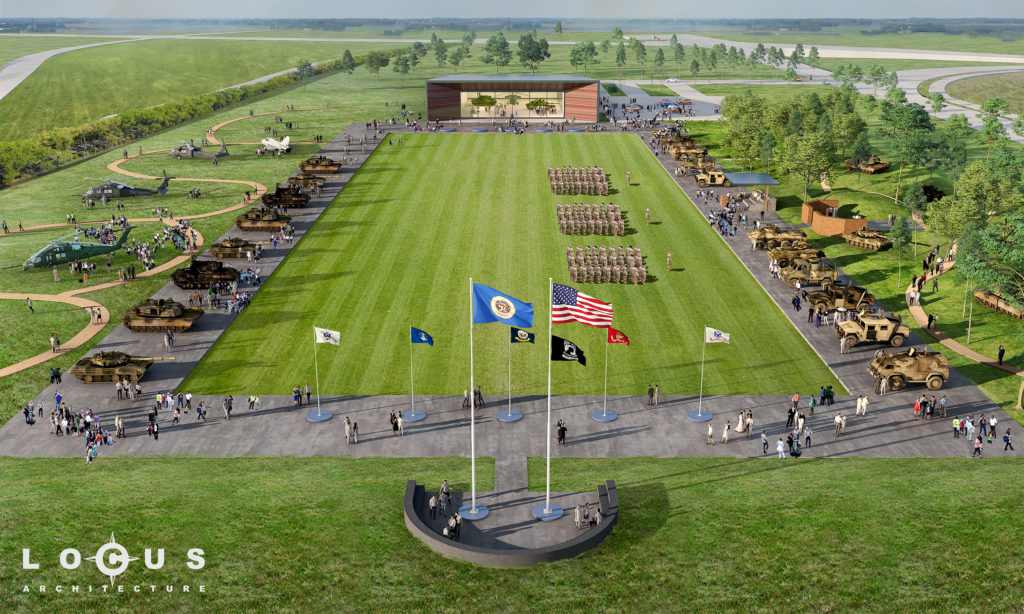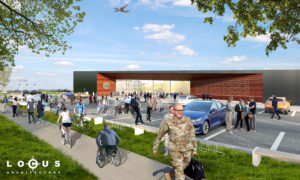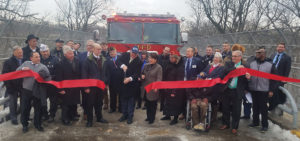
Restorative Justice Act falters, but one-time transfer for surviving spouses passes
By Tim Engstrom
ST. PAUL — Everyone watching the Veterans Restorative Justice Act expected it to pass the House and Senate in the October special session without any problems.
After all, it had passed the House in May 2019, and it passed the Senate unanimously this year in August, September and again in October.
But it failed as two major political parties did what they do best: fight. (See story Page 3.)
Still, another priority of the Minnesota Commanders’ Task Force (CTF) did pass, tucked inside the bonding bill at Line 149.5.
Rep. Bob Dettmer of Forest Lake spoke with House Tax Committee Chair Paul Marquart about inserting language in the tax bill. The language allows surviving spouses of disabled vets to do a one-time transfer of the Homestead Market Value Exclusion to a property of similar or lesser value, letting them to live in smaller homes without losing the exclusion.
The measure amends a law the CTF successfully pushed in 2019. The Legislature that year passed a law eliminating the eight-year cap for surviving spouses on the exclusion, making it permanent.
How it works: The Homestead Market Value Exclusion is available to veterans with a 70 or 100 percent disability. County veterans service officers verify the VA disability rating to the county or city. For a rating of 70 percent, $150,000 of market value is excluded. For 100 percent, $300,000 of market value is excluded.
Then if the veteran dies before his or her spouse, the exclusion carries over until the spouse remarries, sells, transfers or disposes of the property — unless that spouse uses the new one-time transfer to downsize to a new home. In that case, the exclusion ends only when the widow or widower remarries, sells, transfers or disposes of the property.
The tax bill ended up being combined into the bonding bill. The House on Oct. 14 approved the $1.87 bonding bill 100-34, then sent it to the Senate, where it passed 64-3 on Oct. 15. Gov. Tim Walz signed it into law Oct. 21.
“I’m glad we were able to get that provision through for military spouses,” said Dettmer, the minority lead on the House Veterans Affairs Committee. “When I spoke with Paul Marquart, he didn’t make any promises, but it looks like he was able to get it in. I called him up and thanked him.”
Minnesota Military Museum
• $13 million for the new Minnesota Military Museum at Camp Ripley.
The funds go toward acquiring land and to design, construct and equip a site for the Minnesota Military Museum outside Camp Ripley. The museum presently occupies space inside a building at the camp. This limits its ability to grow its collection.

“This new museum will be a focal point for the Minnesotans who have served in all branches of the armed forces,” said Randal Dietrich, executive director of the Museum. “The bipartisan support in both the House and Senate was crafted with the leadership of local district Rep. Ron Kresha, House Veterans and Military Affairs Finance and Policy Division Committee Chair Rep. Rob Ecklund and committee member Rep. Bob Dettmer.”
The new site is on 32 acres at the junction of highways 371 and 115. The new museum is to cover 40,000 square feet and open in spring 2023. A full story in the April 2020 issue showed renderings and spelled out plans.
The cost of construction, moving and outdoor elements totals $16 million. The KAHR Foundation has donated $3 million to get the ball rolling, and the museum seeks another $5 million for additional tools and technology to share veterans’ stories.
Minnesota Department of Veterans Affairs
The Minnesota Legislature appropriated $6.75 million for MDVA needs. Here is a breakdown:
• $6.3 million for asset preservation. The MDVA has 68 buildings to maintain in Minnesota Veterans Homes and Minnesota Veterans Cemeteries, and this funding goes toward maintaining those structures.
MDVA Legislative Director Ben Johnson said repair projects are ongoing. He said the agency performs annual infrastructure assessments, determining useful life of, for example, a roof, a window, a carpet, and it spends the funding in order of need. The agency originally requested $10.7 million in asset preservation and $4.2 million in safety and security upgrades for the homes.
The agency has 1.06 million square feet to maintain, and its 68 buildings have a replacement value of $311 million. (This does not include the Veterans Service Building in St. Paul, which is under the Department of Administration.)
• $100,000 for designing and constructing a new greenhouse at the Fergus Falls Veterans Home. The local veterans community already has raised another $100,000 for the project.
“It’s an excellent project,” said Fergus Falls Post 30 Commander Warren Wilson. “It’s another activity the veterans will have available to them. Our Legion does a lot of projects up there. I believe it is one of the best veteran homes in the state if not the nation.”
Fergus Falls Veterans Home Administrator Scott Buchanan said the state and private funding will provide enough for the greenhouse project. He said the groundbreaking is slated for sometime in 2021, though COVID-19 could stand in the way.
“When completed, our greenhouse will allow for an accessible, comfortable space for our veterans to garden. Our veterans and our staff very much appreciate all the generous donations given and any state funds provided for this project,” Buchanan said.
• $350,000 to Martin County to design and construct a veterans memorial.
Fairmont Post 36 Commander Steve Fosness said the funding will help finish out the existing memorial. It will pay for six bronze statues between the memorial and the restored Bell Cobra attack helicopter to the north. Each statue will represent a different branch of the military and a different era.
The Martin County Veterans Memorial earlier this year received state funding in the Legacy amendment for $130,000. That will fund four bronze statues in front of the POW/MIA/KIA area. It will be a life-size woman on a bench with a child beside her. Presenting her with folded flags will be American Legion and VFW members.
Fosness said donated money, land and in-kind work totals $550,000 for the project.
Truss Bridge Project

The MDVA reopened the Minneapolis Veterans Home Truss Bridge on Jan. 9 with a ceremonial ribbon-cutting. The 2020 bonding bill, however, denotes $7.85 million and features language saying the unspent portions of the project can go toward veteran homes: half for asset preservation and half toward campus security and safety upgrades.
It is not a new appropriation, Johnson said. It is the same as the 2017 appropriation but with language that revises the original so the agency has authority to spend any leftover funds.
Johnson said right now there are about $3 million remaining. The bridge still has to go through a few final inspections.
The Department of Homeland Security in 2018 and 2019 assessed the security of Minnesota Veterans Homes, and the MDVA has worked toward meeting the recommendations. Presently, once inside with code or badge access, visitors have access to most anywhere, Johnson said. The hope is to provide visitors access to designated areas.
Related funding
• $24.5 million to the Minnesota Department of Military Affairs, aka National Guard. The biggest chunk of this pie was the $13 million for the museum, and the rest was $1 million to renovate space at the Rosemount Readiness Center, $2.1 million to renovate space at the Fergus Falls Readiness Center, $5.35 million to renovate space at the Moorhead Readiness Center and $3.1 million to renovate space at the Marshall Readiness Center.
• $1 million for construction of the Camp Ripley Veterans State Trail. This DNR trail honors vets. The plan calls for 32 miles of paved trail in the Little Falls area to connect other state trails, resulting in a 500-mile network.
• $5 million to Dakota County for construction of the Veterans Memorial Greenway, which includes memorials, a community gathering space and a trail connection between Lebanon Hills Regional Park and the Mississippi River.
• $700,000 to Redwood County as a reimbursement for paving Noble Avenue, including paving the main access to a new state veterans cemetery planned for near Redwood Falls.